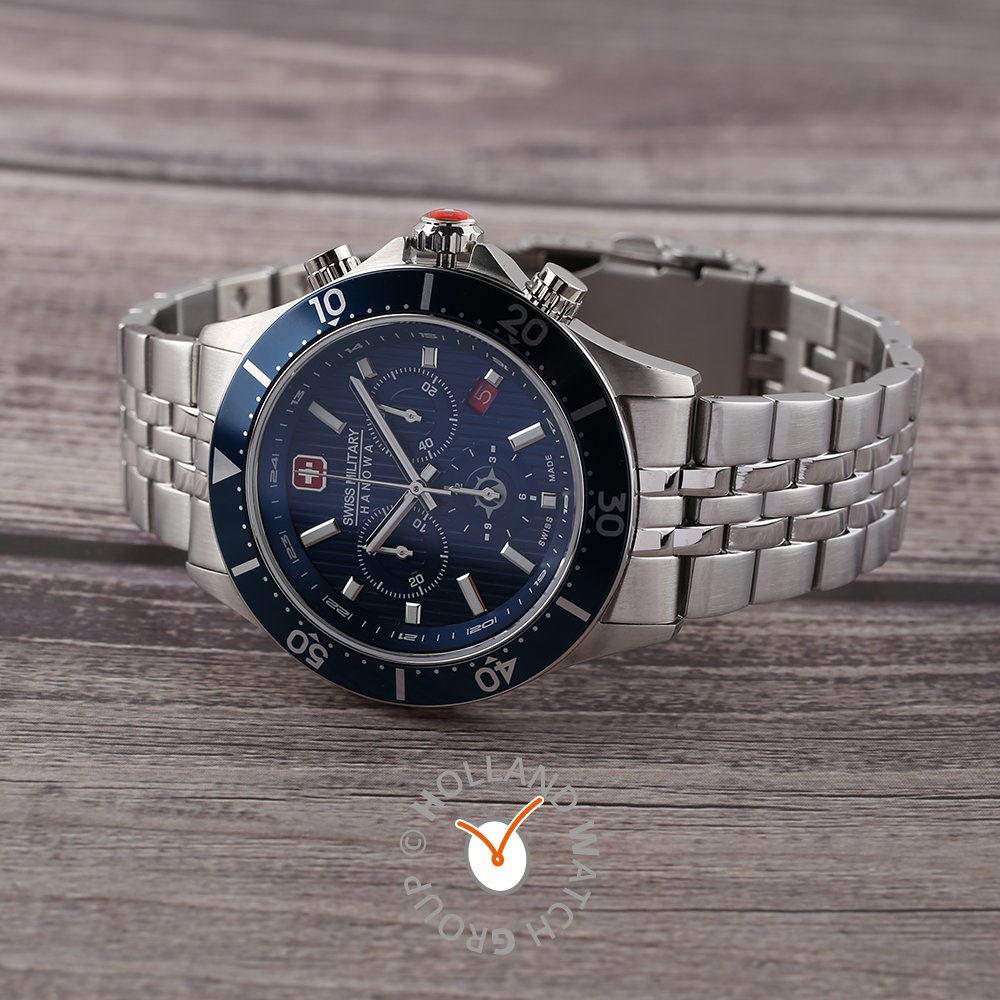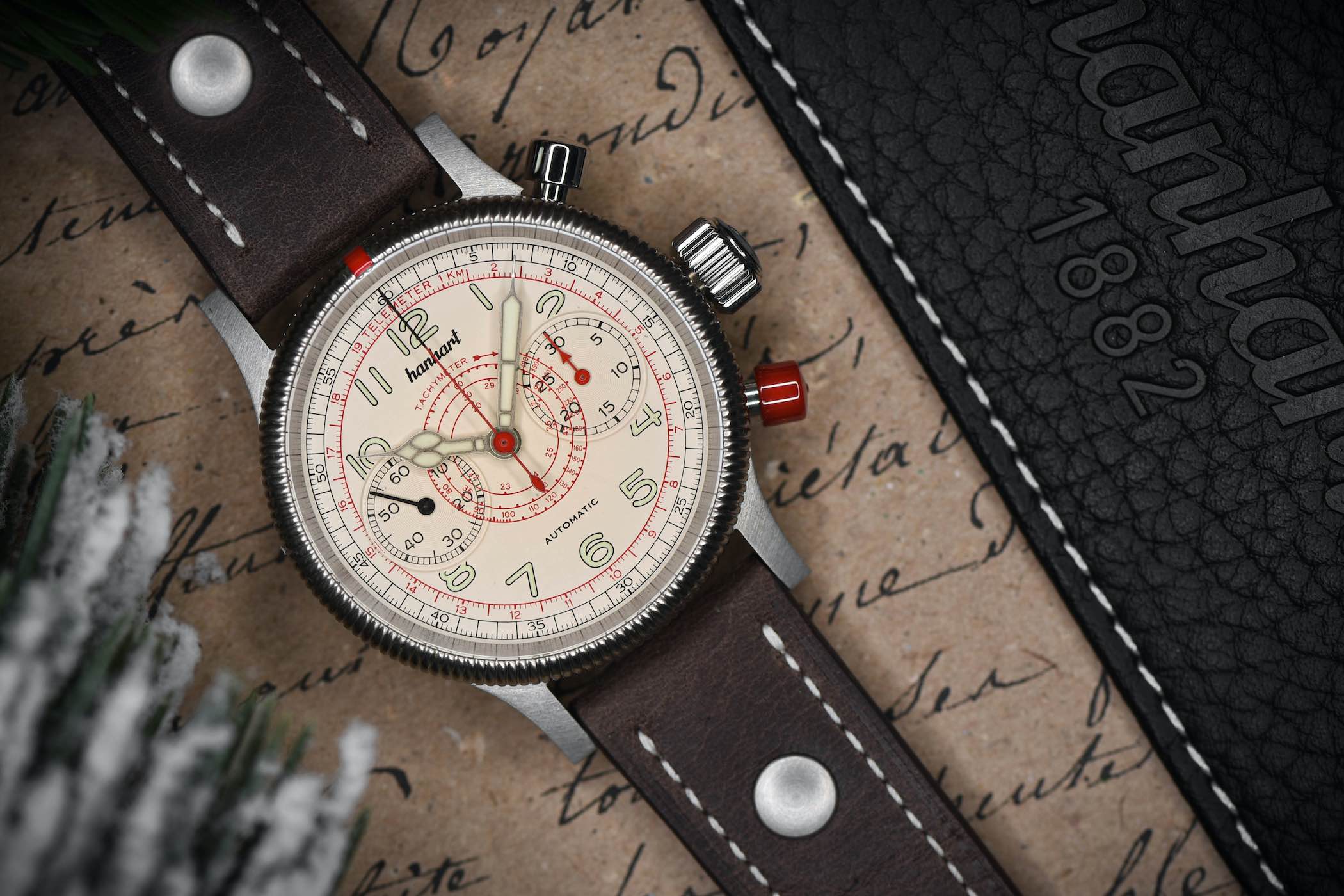Chronograph Military - The history and development of the wristwatch is inextricably linked with the military. While the Great War strengthened the appeal and credibility of wristwatches among men, it was World War II that funded some of the greatest developments in watchmaking.
As the air became a critical part of modern warfare—much of World War II, in fact, took place in the sky—wrist watches became essential for managing new technologies and implementing strategies, paving the way for some of the 20th century's .
Chronograph Military

With the advent of war, various types of watches emerged with the pilot in mind, some more effective than others. The British Royal Air Force was issued with the legendary IWC Mk11, while across the Atlantic the US Army Air Force was equipped with the comparatively prosaic A-11, often referred to as "the watch that won the war".
Vintage Pilot Chronograph Watch Men 39mm Quartz Wristwatches Baltany Military 100m Diver Chrono Watches Vk61 Movt Luminous Clock
However, arguably the most fascinating and sophisticated type of pilot's watch, especially from a mechanical perspective, were the chronographs, which enabled pilots to make quick calculations and make accurate times. Although many of them have been underrated over the years, they are - pardon the pun - flying high right now, not least because they offer a synthesis of purpose and beauty inside and out that's worth preserving. is
It all started with the Germans, who were said to be the only combatants in World War II with accurate stopwatch skills. The chronographs made for the Luftwaffe are undoubtedly some of the most important WWII-era watches, highly sophisticated inside and out, and to which the more famous Type 20 owes much of its design.
In 1938 and 1941 Hanhardt and Tutima (or UROFA-UFAG as it was known) in the Black Forest in Glashütte respectively supplied pilot chronographs to the Luftwaffe. The defining function of the watches was the flyback function, a new technological achievement that played an important role in cockpit functionality. First invented by Longines a few years earlier in 1936, this simple but efficient method offered a significant advantage as it allowed pilots to quickly reset their watches and restart for dead reckoning navigation.
Several versions of the watch were made by both companies, but the archetypal variant was the dual-button flyback chronograph powered by Hanhart Cal. 41 (1939) or Tutima Cal. 59 (1941). Hanhart also produces a version with monopusher cal. 40 (1938) without the flyback mechanism. Mechanically speaking, the most obvious difference to the Flyback chronograph is the lack of a tab on the reset hammer, which allows the chronograph to be reset while running. When resetting, a separate lever disengages the chronograph. Then once the pusher is released, the lever is released, and a spring then pushes the gear train to re-adjust the chronograph seconds.
Mwc Mechanical/quartz Hybrid Nato Pattern Military Pilots Chronograph In Non Reflective Brushed Stainless Steel Finish
These chronographs were of a classic column wheel design and equipped with Incabloc shock protection specifically for the balance assembly. They differ aesthetically from the Type 20 in their nickel-plated brass cases, scalloped bezels with red markers, cathedral hands, as well as sometimes red-coated pushers. Hanhardt Chronograph with Cal. Notably, the 41 had an asymmetric position of its pushers for easier operation.
Unfortunately, military watches are, by their very nature, used and abused, and these chronographs are rarely found in good condition even due to their case materials. However, their historical importance is undeniable.
After World War II, as part of France's reparations, Henhardt produced Type 20 watches for the French Air Force under the name Vixa. It was one of at least seven companies that produced these Type 20 chronographs, along with Mathé-Tissot, Airen, Auricoste, Seliva Chronofix, Doden, and of course Breguet whose Type 20s are the most coveted today.

The specifications are traditionally calculated for a sub-38mm case with a screw back thickness of no more than 14mm, accuracy within eight seconds per day, and most importantly, a flyback chronograph with a start-stop function. which will work in point of issue. Reliable at least 300 times. But apart from that, they varied in dials, hands, lenses, crown size and shape.
Breitling Aviator 8 Curtiss Warhawk Chronograph Military Green Watch
Mathé-Tissot, which had supplied chronograph wristwatches to the US Army Corps of Engineers during World War I, was subcontracted to produce the Type 20 for Breguet. It is believed that around 2000 Type 20 chronographs were supplied by Breguet in the 1950s. They were armed with Valjoux 222. Later versions sold in the civilian market were powered by the 222, 225, 235 and 720.
In particular, the Breguet Type 20, designed for the French Air Force, differed from those for the Navy in that it had a soft-iron cage to protect the movement from magnetism. In addition, they also featured a 30 minute counter, while the marine versions had an extra large, "big eye" 15 minute counter.
As manufacturing costs rose, the French government stopped using them. However, Breguet began selling these watches to the general public with his name on the dial. Unlike the original, military-themed versions, the watches are identified by the model name in Roman numerals – Type XX.
Breguet is believed to have produced around 2,000 Type XXs for the civilian market, of which only three were made in yellow gold. In 2018, a specific gold example was sold at Philips for 200,000 Swiss francs.
British Brand Geckota Reveals Their New W 02 Vintage Military Chronograph
The most famous military watch on the other side of the English Channel is undoubtedly the legendary IWC Mark 11 issued to the British Royal Air Force. But there was also an interesting monopusher chronograph developed for the MoD in the late 1940s to 1970s, issued by Lemania.
A fine example of a RAF Lemania Series 3 with a unique asymmetric case to protect the crown and pushers. (Image: Shake the Oyster)
These chronographs are divided into three series, with the archaic version being the third series, which had a unique asymmetrical case to protect the crown and pushers. They were issued to both the RAF and the Fleet Arm of the Royal Navy, and thus have the familiar design codes characteristic of pilot watches such as a large black dial with Arabic numerals, luminous hands and markers.

The most impressively robust column wheel in the watch was the Lemania 2220, unlike the previous cal. The 15CHT that powered the previous series incorporated an Inkablok shock protection system for the balance staff. Additionally, these Lemania movements were also unusual in that instead of having a finger mounted on the chronograph seconds wheel to advance the minutes every 60 seconds, it had an oscillating pinion that connected the second wheel of the gear train to the minute recorder wheel. Adds Chronograph fitted. Having a separate system like this would theoretically reduce the load on the gear train because it would eliminate that jump. It will also produce a continuously flowing movement rather than the semi-instant minutes found in regular chronographs.
Oriosa Military Chronograph With Stunning Patina Dial, Manual, Huge 37
Lemania 2220 movement with an oscillating pinion visible to the left of the minute recorder wheel. It connects the central wheel of the movement to the chronograph minute wheel. (Image: watchguy.co.uk)
Some of the most highly regarded military chronographs today are the CP-1 and CP-2 (Cronometro da Polsa Type 1 and 2), developed in the 1960s and 1970s for the Aeronautica Militaire Italiana (AMI), or Italian Air Force. have been done A novel sold by a merchant. from Carelli. However, the story of the CP-1 / CP-2 chronograph began with an even more remarkable watch – the Type HA-1, an extremely rare, oversized split-second chronograph made by Universal Genève from 1953.
At 44.5mm wide, the watch is large even by today's standards and features a white 24-hour dial with a 16-minute counter for pilots to calculate the hour angle. Importantly, the watch is powered by the Valjoux 55 VBR, the same split-second movement in the legendary Rolex Ref. 4113. Due to its contemporary dimensions, exceptional movement and rarity, its prices are now north of 150,000 Swiss francs.
The HA-1 was replaced by the CP-1 designed by Leonidas and later by the CP-2 by Universal Geneve, Zenith and again by Leonidas. The size of the two generations differed: the CP-1 was 39mm wide, while the CP-2 was 43mm. Both, like the HA-1, were powered by movements originally designed for pocket watches, hence their dimensions. The CP-1 was powered by a Valjoux 22-2 movement with flyback and hacking functions.
Wenger Swiss Military Classic Chrono
The CP-2 was characterized by a distinctive wide, black bezel, very reminiscent of the Heuer Bund chronograph. Zenith watches were manufactured by Cal. The 146 DP (not a flyback) was produced by the chronograph specialist, Martel, a movement manufacturer purchased in the late 1950s. Leonidas CP-2 was produced by Valjoux cal. 222, the same movement used in the Breguet Type 20. The Universal Geneve version, on the other hand, uses cal. 265P, but production is considered limited due to cost.
All CP-2s feature a three-part case with a screw case back, an internal dust cover, a black dial illuminated with tritium, a bi-complex chronograph layout and an external rail track. Recently, CP-2
Military drone range, laser range finder military, military range bags, military range targets, long range military radio, military radio range, military range finder, military long range binoculars, range rover military discount, military range rover, range of military drones, military range bag

0 Comments